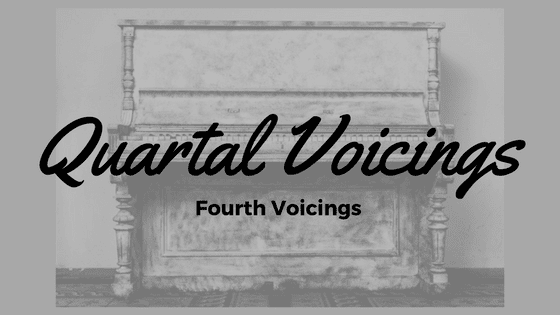Quartal Voicings - Fourth Voicings

The term "quartal" in music refers to the interval of a fourth. When musicians refer to quartal voicings they are referring to chords that are built using intervals of a fourth (as opposed to intervals of a third, like major or minor triads, which are referred to as "tertian").
In order to build or use quartal voicings, it is very helpful to have an understanding of intervals (i.e., being able to know the distance between two notes, such as major 3rds, perfect 4ths, augmented 4ths, minor 7ths, etc). Voicings that are built entirely on fourths have a very distinct, angular sound, much less rounded than the sound of tertian chords.
This sound is very characteristic of certain modern jazz players, such as McCoy Tyner, who commonly used quartal voicings in his playing. Let's consider an example - McCoy Tyner's song entitled "Passion Dance." This piece uses only one chord for solos (F7sus4). Listen to McCoy Tyner's solo as well as his comping.
You'll hear left-hand chord shapes such as these:
- F-Bb-Eb
- G-C-F
- A-D-G
- C-F-Bb
- D-G-C
These are all quartal voicings, built using intervals of stacked fourths.
Here's another classic example that uses quartal voicings (and an interval of a third, so it's not purely quartal-based). Here is the classic "So What" voicing (sometimes referred to as the "Bill Evans" voicing or the "dorian" voicings - all so-named because they were played by Bill Evans on Miles Davis' classic recording entitled "So What" from his Kind of Blue album).
In your left hand, play the notes D and G, and in your right hand play the notes C, F, and A. Notice that the chord is built using stacked fourths but also includes an interval of a third at the top (between F and A). Now bring all of these notes up one step in the D dorian scale. Practice playing back and forth. These are the same voicings popularized by Bill Evans on that landmark jazz recording.
Fourths are a great part of piano theory to explore in music, especially for anyone interested in jazz soloing and comping.